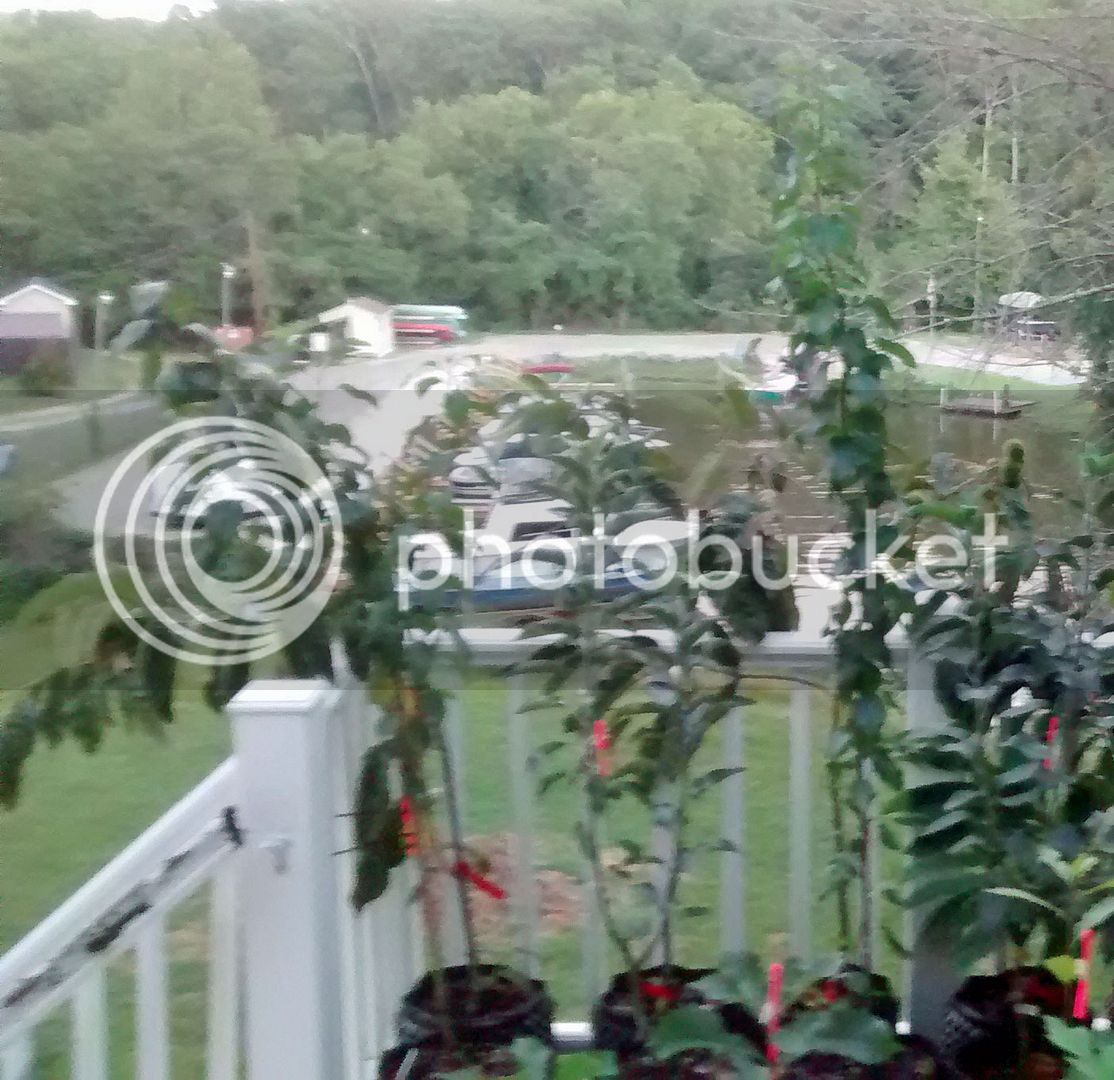Excellent question ... and a big secret to growing nice sized trees in the shortest period of time. I believe the two most important dimensions of getting small trees up and running include a.) eliminating competition - see the mulch around the tree, and b.) providing suffi9cient moisture during the first 2-3 years ... aha, the value of the landscape pot. Studies at Kansas State U. demonstrated that grass growing under an oak tree could/did cut it's growth rate ny 1/2 to 2/3. Eliminating competition is easy - spray with gly before planting and MULCH (I like wood chips - I get them free). Sometimes I place landscape fabric under the mulch (wood or stone mulch). Here's how I answered this question when ask by a nice person in TX some time ago.OakSeeds - how are you direct seeding? I see buckets or pots around most of your trees...
Originally Posted by OakSeeds
Even though I am planting a small acorn, I prepare a "planting hole" that is 2-3 feet in diameter and 12-18 inches deep. I plant the acorn (lay it on it's side so the radical grows downward) about 3-4 inches deep (it will be only a couple inches under the soil after moisture compacts the loose soil in the planting hole). I cover the acorn with a piece of hardware cloth or other piece of metal to keep squirrels/other rodents from eating the acorn. I take a 3-gal black plastic landscape pot and cut the bottom out of it; then, I place the pot over the planted acorn and push it down 2-4 inches into the loose soil. The landscape pot serves 3 important purposes; first, it helps to keep rodents and rabbits away from the newly planted acorn or newly growing seedling. Second, the black plastic absorbs sunlight and gives me a greenhouse effect in the early spring with cool days. 3rd, the pot makes watering the tree very efficient with no runoff; all the water goes directly down to the root zone. Finally, I almost always place a cage over the newly planted tree; if you don't, it is very likely deer will browse the central leader off them (make bushes of you tree). I always give direct seeded acorns a good watering when I plant them to ensure the radical has good contact with the soil and that it has the moisture necessary to promote growth. Good luck; contact me if I can be of help in any way.
Thank you very much!!
QUOTE=Tree]I enjoy your threads on direct seeding oaks very much
What is your method of direct seeding white oak acorns in the fall?
Thank you very much..... - Tyler Texas
I removed the person's name simnce I had not secured permission to post his post.









